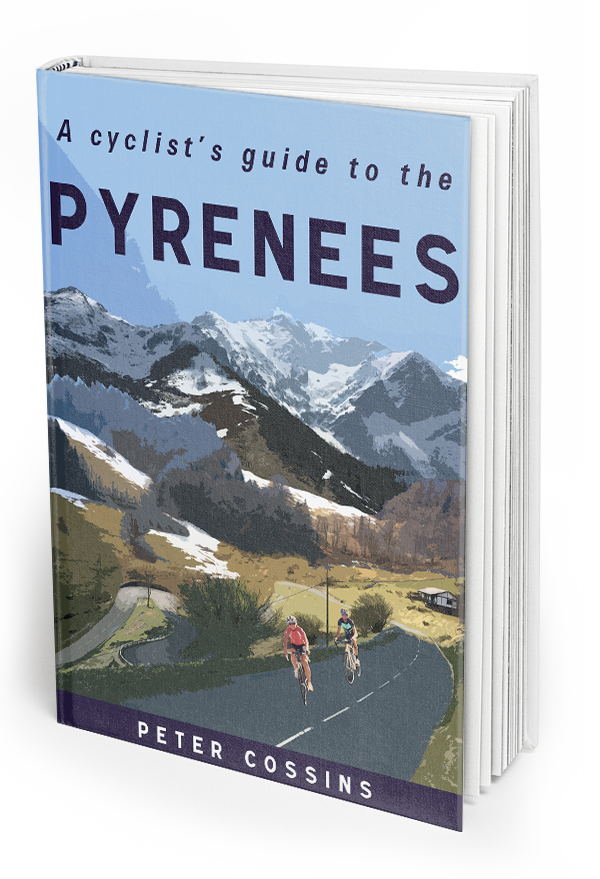Words by Peter Cossins | Photo: CorVos/SWpix.com
The problem with golden ages is that we don’t tend know we’ve been in one until it’s gone. This is an attempt to break that trend by declaring that cycling is now in the midst of a gilded era that will stand comparison with similar periods in the past, the post-war Coppi-Bartali-Bobet years, for instance, and the 1970s and 1980s when Merckx, Hinault, Fignon and LeMond were in their pomp. In fact, I’d suggest that it could surpass even those great epochs and assert that there’s never been a better time to be a cycling fan.
There’s been plenty of evidence of this in the Classics over the last couple of seasons, partly thanks to the emergence of a group of riders whose primary instinct is to attack rather than watch and wait. This kind of aggressive strategy is, of course, easier to employ in a one-day event where going full gas isn’t going to have any repercussions the next day. Yet, the Grand Tours have also become much more engaging too as a spectacle, as the first week of this year’s Giro d’Italia has underlined.
At the end of the race’s second weekend, there have been great performances and talking points almost every day, beginning with Filippo Ganna’s Turin time trial tour de force on day one, a performance of savage power and compelling beauty that it was impossible not to be wholly awed and impressed by, even if you’re a TT agnostic like me.
Day two brought the first of three mesmerising bunch sprints, the kind of finishes that you should be watching from behind the sofa or through the gaps between your fingers as they’re clamped over your eyes. Watching the coverage on French TV, I’ve lost count of the number of times that commentators Jacky Durand, Marion Rousse, Steve Chainel and Guillaume Di Grazia have exclaimed, “Ca frotte beaucoup. Oooh, la, la!” as riders have bumped, barged and elbowed each other in the battle for position. Then there’s that final explosion of speed, the action so frantic and rapid that you have to watch half a dozen replays before you can clearly see how the sprint unfolded.
Over the last decade or so, the Grand Tour organisers have been much more canny when piecing together their routes, endeavouring to provide spectacle throughout while, at the same time, keeping the overall verdict in doubt for as long as possible.
One of the attractions of bunch sprints in the last few seasons, particularly at the Tour de France and Giro, is that there doesn’t tend to be one dominating rider in the way there used to be when Mario Cipollini, Mark Cavendish and Marcel Kittel were in their pomp. Currently, there are usually at least half a dozen and even as many as 10 sprinters spread across different teams who are capable of winning if their teammates get the lead-out and positioning right, the momentum switching from one to another at each bunch finish.
In a similar way to the Vuelta a España and more so than the Tour, the Giro also tends to favour those riders whose principal hope of success is always likely to come in a breakaway. My highlight of the week was Taco van der Hoorn’s solo victory in Canale on stage three. I suspect most fans were pedalling frantically with him, trying to give the gurning Dutchman an imaginary push as he gave all he had to hold off a peloton that somehow never get organised in its pursuit of the Intermarché-Wanty-Gobert rider. Then, as van der Hoorn approached the line, the gurn turned to the most wonderful grin when he realised that he’d done what he needed to and was about to win a stage at the Giro.
The victories taken by Joe Dombrowski at Sestola on day four, a long-awaited and much-deserved Grand Tour success for the American, by Gino Mäder at Ascoli Piceno two days later, the Swiss resisting the late charge by the big hitters, and by young Frenchman Victor Lafay at Termoli, were of the same type as van der Hoorn’s exploit. Each judged their effort faultlessly, their successes having a little more cachet because they took them when the peloton was still comparatively fresh and the stakes were high.
All the while, the overall contest has been bubbling very nicely, the favourites sparring occasionally with each other as first Ganna, then veteran Alessandro Di Marchi and, over the last three days, young Hungarian Attila Valter have savoured the prestige of wearing the maglia rosa. This “dosing” of the battle for the overall title is arguably the most significant change to Grand Tour racing over the last decade or so.
When I first started reporting on the sport in the early 1990s, the routes of the Grand Tours were forged using a very similar template: a time trial to begin with, a series of sprint stages, a longer time trial, then a big mountain test at the mid-point. This frequently resulted in the overall battle being all but finished when the race was only half-complete. The Tour became the most predictable of the trio of three-week stage races, the sport’s biggest shop window reduced to a humdrum procession.
Over the last decade or so, the Grand Tour organisers have been much more canny when piecing together their routes, endeavouring to provide spectacle throughout while, at the same time, keeping the overall verdict in doubt for as long as possible. Messrs Prudhomme, Vegni and Guillén and their organising teams have become masterful at achieving this. Last year, for the first time, the winning margin at all three of the Grand Tours was less a minute. What’s more, you have to go back to the 2016 Tour to find the last occasion when anyone finished a three-week race with a very comfortable margin, Chris Froome taking victory by four minutes and five seconds that year.
Today’s stage provided another good example of a Grand Tour organiser serving up a route that delivered plenty to watch, but didn’t kill the overall suspense. Egan Bernal’s magnificent burst in the final few hundred metres on the gravel finish at Campo Felice that enabled him to claim his first GT stage win and maglia rosa may have installed him as favourite for the overall title, but the Colombian’s still has eight riders within a minute of him, and of them only Valter currently looks likely to drop out of contention quickly.
There’s one more significant component to the upward trend in Grand Tours and indeed all racing at the top level, and this applies equally to women’s events. The coverage is better than it has ever been, with a substantial improvement noticeable during the most recent seasons. The commentators and their expert consultants are more insightful, while the coverage is rarely dull, even on the most benign of sprint stages. Stats, interviews, historical interludes and analysis are all adding to a better viewing experience, their use complementing the wonderful images that have always made cycling such an attraction.
Going back to today’s stage once again, all of these factors came together to produce four hours of fabulous entertainment. Clearly, not every Grand Tour stage and not every Grand Tour is going to be as consistently thrilling as this edition of the corsa rosa has been. However, the processions that were often the norm 10, 15 and 20 years ago are also far less likely to reoccur.
Over the past 30 years, racing has never been as consistently good as it is now. What’s more, looking at the young talents already burning a trail through the sport – the likes of Tom Pidcock, Lorena Wiebes, Demi Vollering and Remco Evenepoel to name but four – this upward looks set to continue. This is an era to relish.

Peter Cossins’s latest book, A Cyclist’s Guide to the Pyrenees, which features more than 100 routes and more than 300 climbs and passes, is now available from all good book shops and from Great Northern Books.






